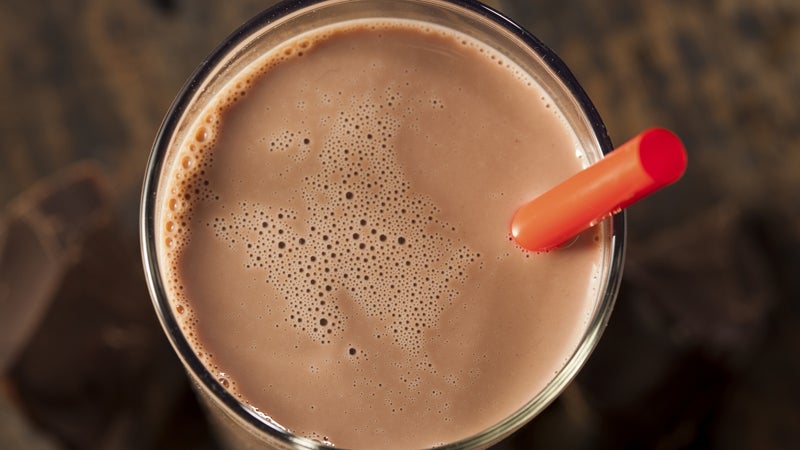Three years ago, it seemed like every fitness rag was hyping chocolate milk as the optimal recovery drink. It’s been in the fridge all along! We didn’t even know! The drink’s 4:1 ratio of carbs to protein, experts said, best promotes muscle repair and rebuilds energy stores after a workout. However, for a large chunk of endurance athletes including 56-plus percent of road racing runners, says Stanford researcher and founder of Osmo Nutrition Stacy Sims, it may not be true.
While “nature’s sports drink” may be a great choice for men, Sims says it’s not ideal for women. In fact, many golden rules of hydration simply don’t work best for the fairer sex. Female athletes, Sims writes on her website, “have a distinct physiology with its own set of needs.”
Below, Sims breaks down hydration by gender so you can get the most out of training and racing, no matter what chromosomes you’re carrying.
Hydration During Exercise
“It’s not necessarily fluid needs per hour, but the composition of the drink that is more sex specific,” Sims says. Sims generally recommends all athletes take in 10 to 12 milliliters of fluid per kilogram of bodyweight per hour. (In American, that’s about 23 to 28 ounces per hour for a 150-pound person.) Even simpler: most researchers now recommend drinking according to thirst.
Women
The issue: About a week before a woman’s period starts, women bloat, holding more fluid between cells rather than in the blood. “Women lose eight percent of their plasma volume when they have high hormones,” Sims says. “It’s not a big deal if you’re not exercising, but if you’re exercising, it means you’ve lost fluid available for sweat.” No sweat equals a tough time regulating your body temperature while you work out.
Fix it: “Women need a little bit of sodium in any fluid they’re drinking in order to pull that fluid into the blood,” Sims says. The hormone progesterone also makes women lose total body sodium, Sims says, making them more susceptible than men to hyponatremia. Aim to take in about a teaspoon of salt before a hard, long, or hot workout if you weigh around 140 pounds, or 3/4 of a teaspoon if you weigh around 120.
Men
“Men don’t have that [progesterone] fluctuation,” Sims says. “Just know that a little bit of salt will help you hold onto your fluid more than no salt at all.” In general, men can get by with less sodium than women.
Post-Exercise Hydration and Recovery
Women
The issue: “Women need more protein than men because progesterone is so catabolic,” Sims says. “There’s not enough protein in [chocolate milk] for women.” Also, women have a much smaller window than men—30 minutes versus 2-plus hours—in which to optimize recovery through nutrition.
Fix it: Sims recommends women eat something containing 25 to 30 grams of protein in a 3:1 ratio of carbs to protein within 30 minutes of completing a tough workout. “One of the best recovery foods out there for women is low fat or nonfat Greek yogurt. It has a great amount of protein, some potassium, sodium, and carbohydrates,” Sims says. “You could thin that out with almond milk and have the perfect recovery drink.”
MEN
Chocolate milk and its 4:1 ratio works just fine for you. Sims recommends you aim to take in 20 to 25 grams of protein within 30 minutes of completing your workout for good measure.

